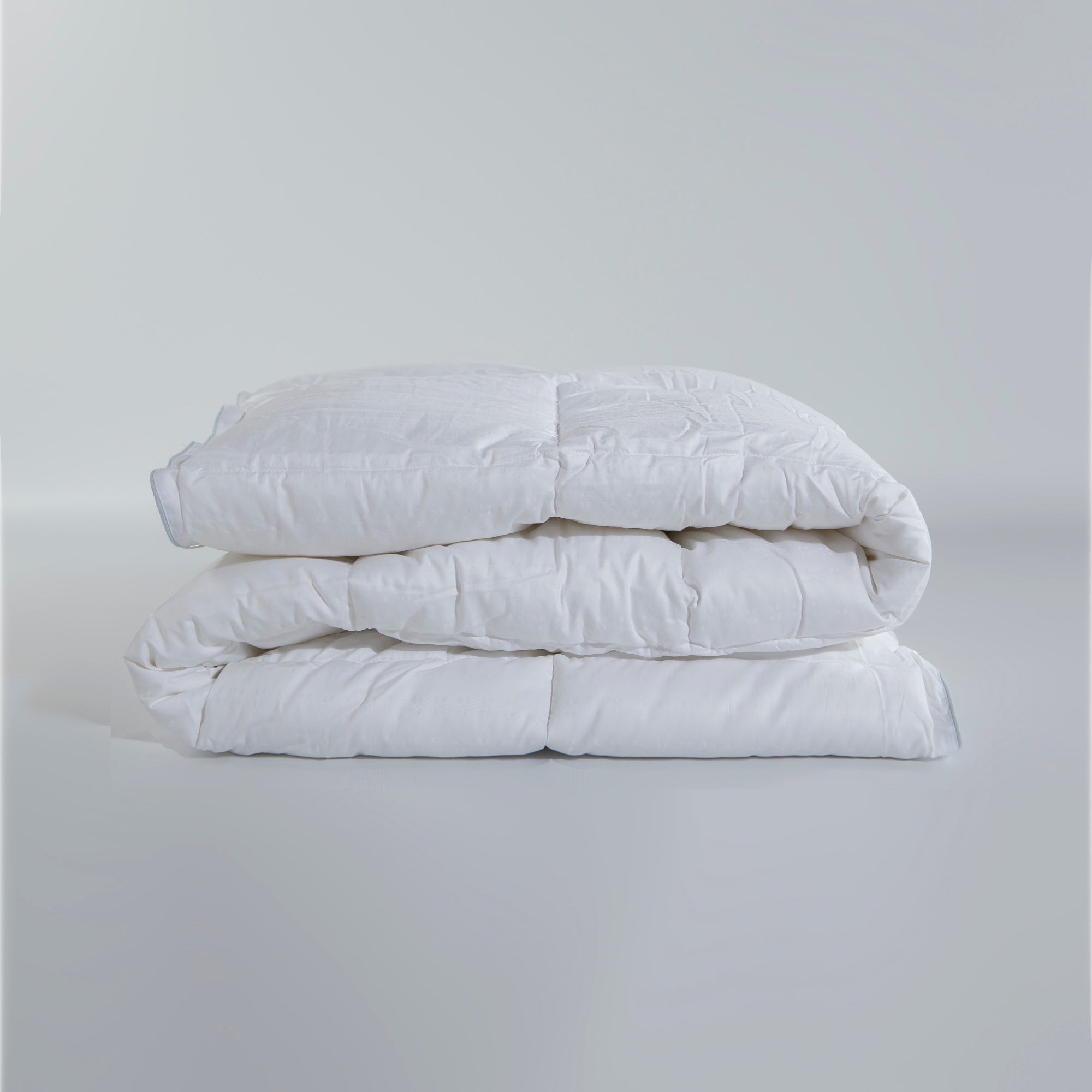Are you considering upgrading your duvet but unsure which filling is best for you? Are you trying to find the best duvet for eczema or perhaps the best anti allergy duvet? Look no further, we’ve got it all sorted.
Keep reading to discover the many duvet filling types available, their benefits and which is best for you.
Types of Duvet Fillings
Hollowfibre Duvets
Hollowfibre is a synthetic material with a unique feature of being hypoallergenic which is good for hypersensitivity sufferers. As these can be machine washed repeatedly dissimilar to feather duvets so it is easy to care for them. These are the most popular duvets.
If you properly care for these duvets then they can last for almost five years. However, other duvet fillings, such as feather, silk or down which are natural materials tend to last longer.
Everything has advantages as well as disadvantages, so the same is the case with duvets. This type of duvet filling is great for a hypoallergenic duvet and can be washed by machine. But on the other hand, hollowfibre duvets tog value can be lost very rapidly when compared with natural substitutes.
Down and Feather Duvets
Down and feather, as the name suggests, contains down (the material found in the underbelly of geese or ducks) and feathers (usually sourced from geese or ducks). The great thing about down duvet fillings is that they are naturally insulating, so great for both winter and summer in the UK.
The main advantage of this duvet is that it can last longer in comparison to synthetic duvet fillings when cared for properly. However, down duvets can be expensive - which depends upon the ratio of feather to down.
Another great thing about down duvet fillings is that they are even great for those with allergies. While it is possible you can suffer from a goose or duck down allergy, it is rare.
Wool Duvets
Using wool as a duvet filling is not very common. It is, however, recyclable, biodegradable and maintainable. Wool used in duvets is taken from sheep, and its method is very humane.
The main characteristics of wool duvets are: warmth and anti-allergenic properties. Wool can hold heat well, so great for cold winter nights in the uk, and is naturally hypoallergenic. However, it is expensive and not very washer-friendly as it requires a low temperature.
Silk Duvets
Just like wool duvets, silk duvets are naturally hypoallergenic. Silk duvet fillings are some of the best duvets for asthma and eczema. Silk duvets keep you warm in the cold winter months and cool in the hot summer days. But along with these advantages, there are some disadvantages too - such as, they are very expensive duvets and they need to wash professionally.
Microfibre Duvets
Difference between duvets of hollowfibre and duvets of microfibre is that the former has hollow spaces which later doesn’t have. It is considered to be the lightest duvet among all but a duvet of 14 tog also feels lighter. These comforters are similar to some extent to down duvets. It is also anti-allergic but cannot retain heat.
What’s the Difference Between Hypoallergenic and Anti-Allergic Duvets?
While buying a duvet one must know the main difference between anti-allergic and hypoallergenic.
The term hypoallergenic refers to a duvet which will not trigger allergies. Duvet fillings that are hypoallergenic are made of materials that can’t cause significant allergies, such as wool and feathers. Dust mites, however, can develop on hypoallergenic comforters.
Duvets which are said to be anti-allergic have fillings and an outer shell material which has been treated to prevent or fight against formation of dust mites. For people who are fighting with rhinitis, eczema and asthma these duvets are worth using.
But, if you are using any one of these duvets and it has developed dust mites, then they can be killed and removed of their allergens by washing at 60°C or above in a washing machine.
Symptoms of allergic reactions to duvet fillings may be:
- Red or watery eyes
- Sneezing in bed or having a runny, itchy nose
- Skin rashes
- Asthma may worsen
- Your voice may be hoarse in the morning or your throat may be sore
- Coughing
- Other breathing problems












